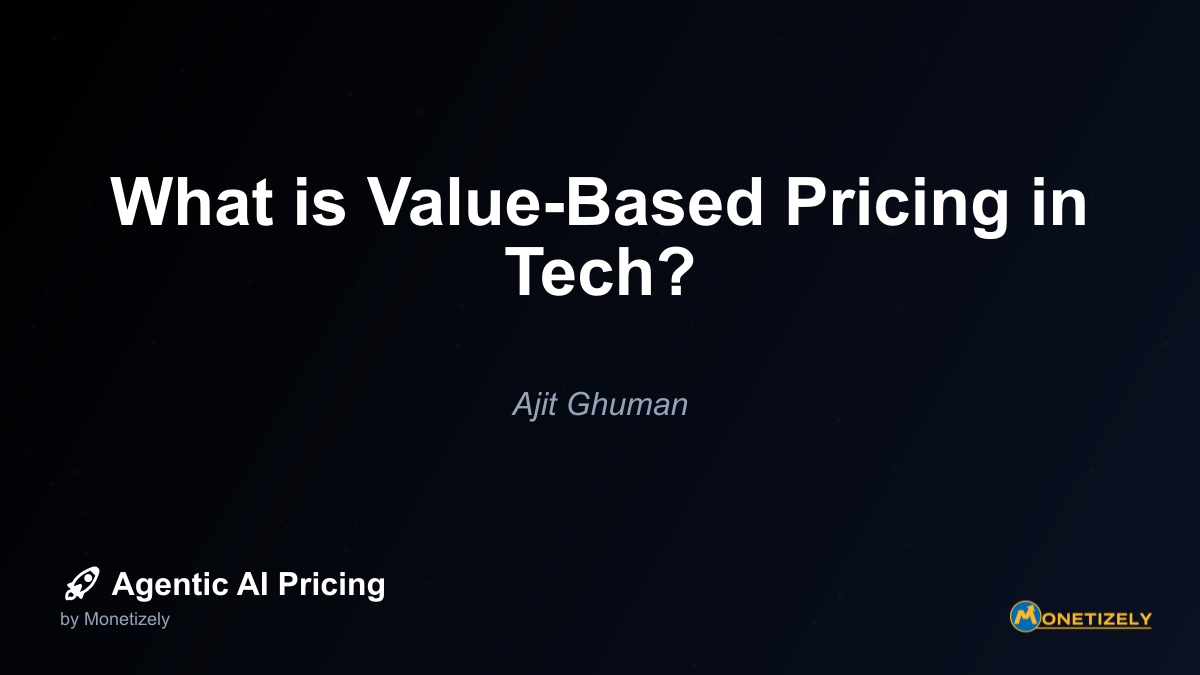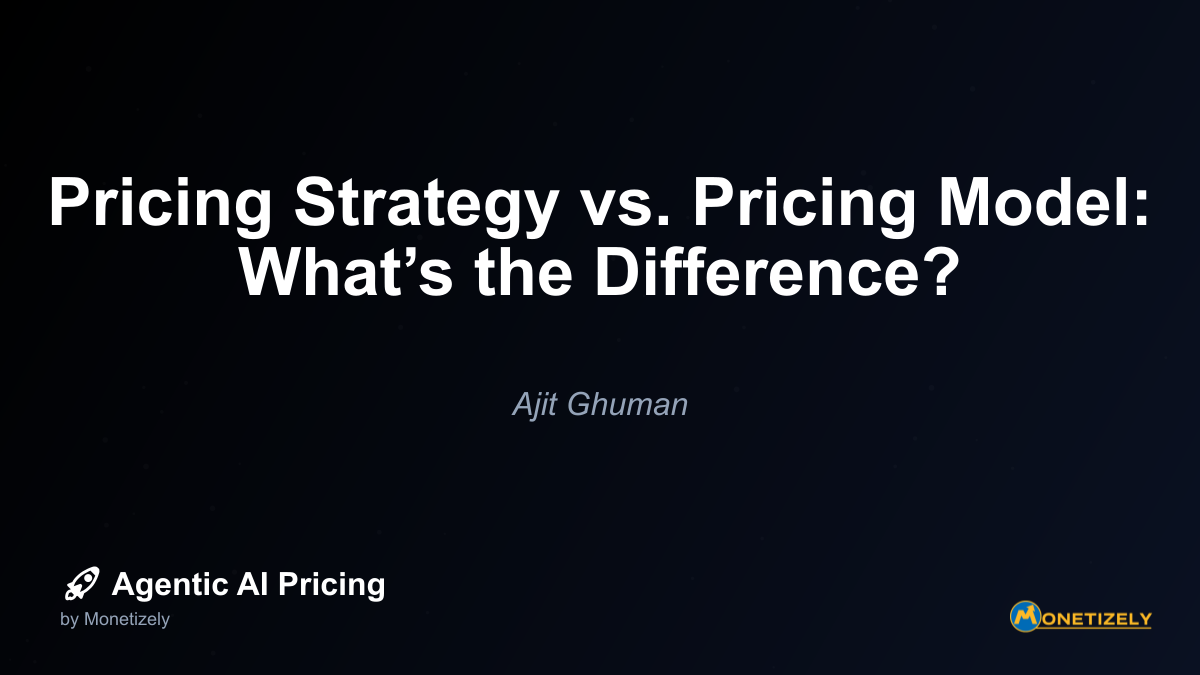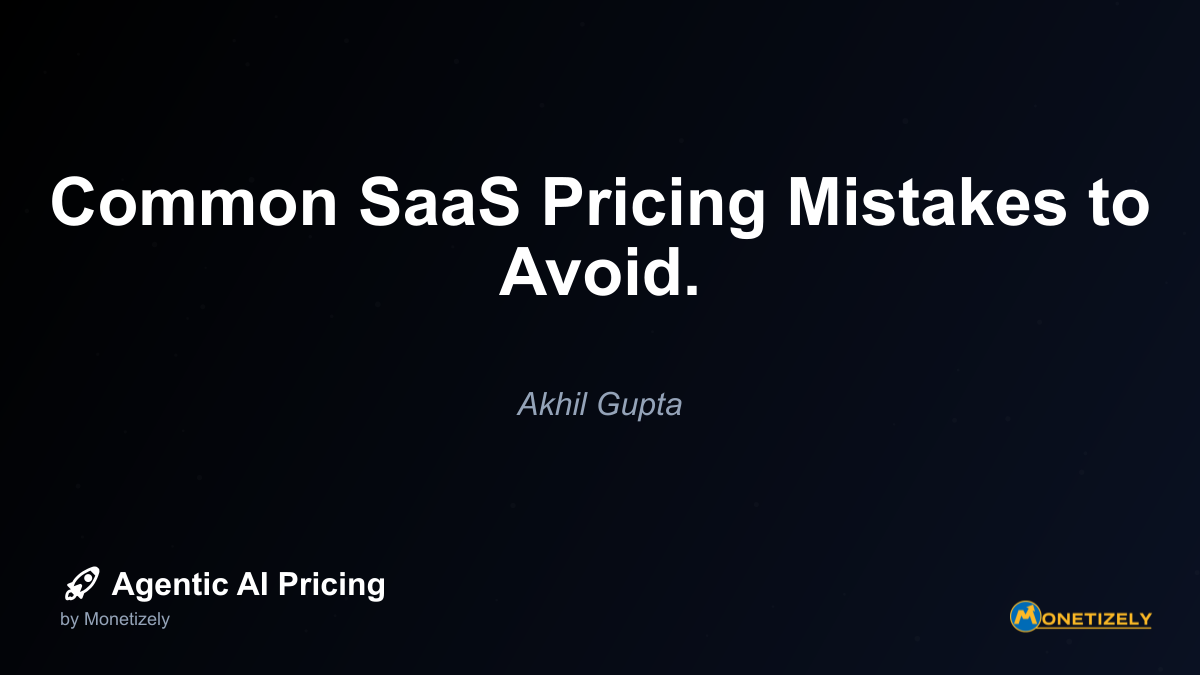· Ajit Ghuman · Pricing Fundamentals · 5 min read
What is Value-Based Pricing in Tech?
AI and SaaS Pricing Masterclass
Learn the art of strategic pricing directly from industry experts. Our comprehensive course provides frameworks and methodologies for optimizing your pricing strategy in the evolving AI landscape. Earn a professional certification that can be imported directly to your LinkedIn profile.

Outcome-Based Pricing Models
For AI services, particularly agentic AI that performs tasks autonomously, outcome-based pricing models are gaining traction:
- Usage-based components that scale with activity volume
- Performance-based elements tied to specific outcomes
- Gain-sharing arrangements where vendors participate in realized benefits
- Success fees for achieving predefined goals
For instance, an AI-powered sales assistant might charge based on a combination of usage volume and a percentage of incremental revenue generated target=“_blank”.
Addressing AI-Specific Value Concerns
AI solutions often face unique objections that value-based pricing must address:
- Implementation complexity and time-to-value
- Data security and privacy considerations
- Explainability and transparency of AI decisions
- Ongoing management and oversight requirements
Effective pricing strategies account for these concerns through phased deployment pricing, value guarantees, and transparent ROI tracking.
Common Challenges in Value-Based Pricing for Tech
Challenge 1: Value Quantification Difficulties
Many technology benefits are difficult to quantify precisely:
- Improved collaboration and communication
- Enhanced customer experience
- Reduced business risk
- Increased innovation capacity
Solution: Develop proxy metrics and benchmarks based on industry research and customer interviews. For example, while improved collaboration is difficult to measure directly, you might track metrics like reduced email volume, faster project completion times, or improved employee satisfaction scores.
Challenge 2: Long Sales Cycles
Value-based pricing often requires more extensive discussions with prospects:
- Multiple stakeholders must understand and agree on value
- ROI calculations need validation
- Budget approval processes may be complex
- Procurement teams may push back on value-based approaches
Solution: Develop a staged approach to value discussions, starting with high-level value hypotheses and progressively refining as the sales process advances. Equip sales teams with tools to engage different stakeholders effectively.
Challenge 3: Internal Resistance
Organizations accustomed to cost-plus or competitive pricing may resist the shift:
- Finance teams want predictable margins
- Sales representatives fear complexity
- Product managers worry about market acceptance
- Executives may be skeptical of value claims
Solution: Start with pilot programs in specific market segments, document success stories, and gradually expand the approach. Provide comprehensive training and incentivize teams based on value captured rather than just revenue.
Challenge 4: Ongoing Value Verification
After the sale, customers may question whether they’re receiving the promised value:
- Usage patterns may differ from expectations
- Implementation challenges may delay value realization
- Business conditions may change
- Competing priorities may emerge
Solution: Implement robust customer success processes that track value realization, address implementation challenges, and continuously reinforce the connection between price and value.
Value-Based Pricing in Practice: Tech Industry Examples
Enterprise Software Example
A business intelligence platform moved from a per-user pricing model to a value-based approach:
- They created an ROI calculator that quantified time savings, improved decision quality, and reduced reporting costs
- Pricing tiers were aligned with different business sizes and use cases
- Enterprise customers received customized value assessments
- Sales teams were trained to focus on business outcomes rather than features
- Customer success managers tracked and reported on value realization
The result was a 35% increase in average contract value and improved renewal rates as customers clearly understood the connection between price and value.
AI Services Example
An AI-powered customer service automation provider implemented a hybrid value-based model:
- Base subscription covered platform access and basic functionality
- Usage-based components scaled with conversation volume
- Performance fees were tied to specific metrics like containment rate (percentage of issues resolved without human intervention)
- Value guarantees ensured customers achieved minimum ROI thresholds
This approach allowed them to charge premium prices while reducing perceived risk for customers new to AI implementation.
SaaS Platform Example
A project management SaaS company transitioned from simple per-user pricing to a value-based approach:
- They identified that different industries derived vastly different value from their platform
- Construction companies saved significantly more than marketing agencies
- They implemented industry-specific pricing based on average project value
- ROI tools demonstrated the connection between efficient project management and profitability
- Customer testimonials highlighted industry-specific outcomes
This approach allowed them to increase prices in high-value industries while remaining competitive in price-sensitive segments.
The Future of Value-Based Pricing in Tech
As technology continues to evolve, value-based pricing will become increasingly sophisticated:
AI-Powered Value Analytics
Machine learning will enable more precise value quantification:
- Predictive models will forecast potential value for prospects
- Usage patterns will be analyzed to identify untapped value
- Behavioral data will inform personalized pricing approaches
- Continuous learning will refine value metrics over time
Ecosystem Value Pricing
As tech ecosystems become more interconnected, pricing will reflect ecosystem value:
- Platform providers will capture value from ecosystem growth
- Integration benefits will be quantified and priced accordingly
- Network effects will be incorporated into pricing models
- Multi-sided markets will develop sophisticated value-sharing arrangements
Real-Time Value Adjustments
Dynamic pricing based on real-time value monitoring will emerge:
- Prices will adjust based on actual value realization
- Performance guarantees will become more common
- Risk-sharing models will evolve with better measurement
- Continuous value verification will support ongoing price optimization
Conclusion
Value-based pricing represents a strategic approach particularly well-suited to innovative technology and AI services. By aligning prices with customer-perceived value rather than costs or competitive benchmarks, tech companies can capture a fair return on innovation while ensuring customers receive substantial ROI.
Implementing value-based pricing requires significant organizational commitment—from research to quantify value, to sales training for value-based conversations, to ongoing customer success processes that verify value realization. However, companies that make this investment typically achieve higher margins, more sustainable competitive positions, and stronger customer relationships.
For technology leaders, the shift toward value-based pricing isn’t just a tactical pricing decision; it represents a fundamental reorientation toward customer outcomes. By focusing on the economic impact of their solutions rather than features or costs, tech companies position themselves as strategic partners rather than vendors—a distinction that becomes increasingly important as technology becomes more integral to business success.
As you consider your own pricing strategy, begin by deeply understanding the value your technology creates for different customer segments. Quantify this value where possible, develop clear value communication, and ensure your organization is aligned around delivering and demonstrating value. With these foundations in place, you can develop pricing approaches that fairly capture a portion of the value you create—benefiting both your customers and your business.
Co-Founder & CEO
Ajit is the author of Price To Scale, a top book on SaaS Pricing and is the Founder of Monetizely. Ajit has led and worked in pricing and product marketing at firms like Twilio, Narvar and Medallia. His work has been featured in Forbes and VentureBeat. Ajit regularly consults with software companies from Seed stage to post-IPO on pricing strategy. Ajit is also a highly-rated co-instructor for 'The Art of SaaS Pricing and Monetization' on Maven.
Pricing Strategy Audit
Let our experts analyze your current pricing strategy and identify opportunities for improvement. Our data-driven assessment will help you unlock untapped revenue potential and optimize your AI pricing approach.




